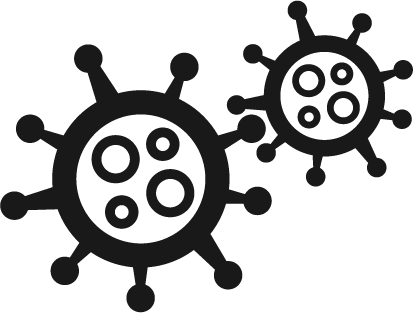
As I write this, I’m on day 7 of a stomach bug. One the ways that food moves is biologically, which is to say, “through us.” And food has been moving very quickly through me for the past week. I’m the type of patient who initially tries to figure out how (and from whom) I got the bug and whether it’s viral or bacterial. My family has been sick a lot in the past month. Only one of the five of us hasn’t had some form of intestinal distress. So in my head, I’m pointing fingers. On top of that, I’m cranky. It’s not a good look. I do not like this about myself, and I’m trying to change my thinking.
When I’m in this kind of mood, I try to create a web of connections that makes individual judgment seem kind of reductive and not really that significant. What is interesting about this situation isn’t the fact that kids in daycare bring home literal and figurative bugs. It’s not the fact that I can’t eat (which is my main focus). Parents of young kids are accustomed to this (even if our bodies are not). It’s not the general fact of transmission of viruses and bacteria in the world. I kind of got my fill of that kind of discussion during Covid. Even after Covid, I’m not even versed enough in science to have an informed opinion about the transmission of viruses. However, the particular transmission of this particular bug (if that is what it is) has shut me down enough to make me stop and think about all the other things that we are transmitting to one another, some of which are very interesting.
For example, In The Transmission of Affect Teresa Brennan writes about how we transmit feelings to one another not just through words, but also through hormones. She writes, “the behavior of hormones has a profile that fits with what we have learned so far about the transmission of affect; and what we have learned is that such transmissions affect the subject’s intentionality, insofar as the subject’s agency is composed of its affects or passions” (76). Pheromones can jump between individuals, influencing behavior.
Brennan writes, “Pheromones act as direction givers which, as molecules, traverse the physical space between one subject and another, and factor in or determine the direction taken by the subject who inhales or absorbs them” (75). Biochemically speaking, we ingest one another. We can create environments for the things we want to happen, but we cannot guarantee those things will happen. Our individual agency has been greatly exaggerated. Brennan suggests that it is “faith in a fantasy.” Furthermore, “[b]ecause of this fantasy, our self-contained individual believes he acts of his own accord, and that his impulses and desires come from nowhere other than the history embodied in his
genes. He is wrong” (76-7). For the past week the affect I had been transmitting was grumpiness.
Neuroscientists, too, have studied the idea that animals (which includes us) can transmit stress to one another through chemical signals. Consider this:
Bishop Sand in The Washington Post
Brennan keys in on the idea of transmitting anxiety, too. “In some cases both affect and motion (hormones in these cases) are responding to a third factor altogether: the social environment, whose air can be thick with anxiety-provoking pheromones” (77). The social environment, then, is subject to stress, which does not reside in one individual, but can be transmitted throughout a situation, altering the behavior of hormones and the organism it flows through. Brennan writes that when stress hormones are coursing through the environment, “the organism does not always, or even habitually, act in its own best interests” (78). Our agency comes from all around us. That we do not always act in our own best interest and that our actions affect our hormones should come as no surprise. But the direction of these actions and the agents in charge are always in flux and are moved by stress and other invisible forces.
Sometimes those forces are also sicknesses, as was the case with me this past week. Sometimes those sicknesses are transmitted throughout the social environment or even the world, as was the case during Covid. It should be no surprise, then, that during times like global pandemics–when everything from our microbiome to our socialbiome (if I can use such a word) is out of whack–we transmit both the disease and the affect. (Not to mention internet memes and conspiracy theories.) It also follows, then, that we may not act in the best interest of ourselves (wherever we draw those lines) or our social and environmental communities.
The connections between our biology and our moods
In “Gut Feminism,” during a discussion of bulimia, Elizabeth A. Wilson writes, “The
gut is sometimes angry, sometimes depressed, sometimes acutely self-destructive; under the
stress of severe dieting, these inclinations come to dominate the gut’s responsivity to the
world” (84). We feel our moods in our guts, requiring an embodied non-rational rhetoric to
account for the ways that our guts—and all the microbes therein—respond to those moods.
Wilson writes that in moments of stress—even self-induced stress that comes from bulimia
or another habitual behavior—“any radical distinction between stomach and mood, between
vomiting and rage is artificial” (84). She writes, “there is no radical (originary) distinction
between biology and mood. Mood is not added onto the gut, secondarily, disrupting its
proper function; rather, temper, like digestion, is one of the events to which enteric substrata
are naturally (originally) inclined” (85). Wilson thus blurs the lines between eating disorders,
nutritional disorders, and mood disorders, writing that “in addition to thinking of
disruptions to eating as symptoms of depression, it may also be useful to think of
depression as a kind of nutritional disorder” (85).